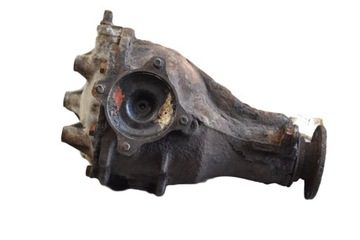
Test drive Volkswagen Touareg
Volkswagen says there are about 2.300 new car parts, but the look and feel of the Touareg (fortunately) remains the Touareg - only in some areas it is better or better. You can also call it Touareg Plus.
The Touareg will, of course, continue to be built at the Volkswagen plant in Bratislava and you will still easily recognize it. It gets a rejuvenated face that clearly shows brand affiliation - new headlights, a bold chrome mask (made of shiny chrome on five- and six-cylinder models and matte chrome on more motorized versions), a new bumper and new side mirrors. turn signals with LED technology (and Side View System). Even the taillights are now LED, so their windows can be darker, and the spoiler on top of the rear doors is more pronounced in favor of better aerodynamics.
In the interior, they are not noticeable, but the new seats are noticeable, there are new items in colors or types of leather, as well as new designs of wood inserts in the cabin. The engineers tackled not only the front seats (here they focused mainly on comfort), but also the rear bench, which is now eight kilograms lighter and easier to fold, leaving the bottom of the trunk flat after this task. They also reshaped the sensors, most notably the new multifunction display, which is larger and, above all, colored.
The high-resolution LCD screen has become much more transparent and at the same time can display the necessary information more clearly. One of them is the operation of the automatic cruise control ACC - it, as usual with such systems, works through the front radar, and the car can not only slow down the Front Scan system, which uses the same radar when there is a risk of a collision, but also completely stop. Radar sensors, this time in the rear bumper, also use the Side View System, which monitors what is happening behind and near the car and warns the driver when changing lanes with a light in the outside rearview mirrors that the path is not clear.
However, since the Touareg is also an SUV (which also has a gearbox and a center and rear differential locks, the rear is optional), ABS (and called ABS Plus) has also been adapted for off-road use. This now allows for better blocking of the bike when riding off-road (or riding on sand, snow ...), so that a wedge of pushed material is created in front of the front wheels, which stops the car more effectively than riding. wheels with classic ABS. ESP now has an additional feature that detects and reduces the risk of rollovers, and the air suspension also has a sporty setting with a feature that reduces the vehicle's lean when driving fast on asphalt.
Air suspension is standard on 3- or multi-cylinder engines, others are available at an additional cost. The engine lineup remained practically the same, the previous two petrol engines (5 V6 with 280 and 6.0 W12 with 450 "horsepower") were combined (for the first time on a car with a Volkswagen badge on the nose) 4, a 2-liter V350 V with FSI technology and a 2 " horses ”, which we already know from Audi models. Diesel engines remained the same: a 5-liter five-cylinder, three-liter V6 TDI and a huge V10 TDI (174, 225 and XNUMX "horsepower" respectively). As before, the transmission is always a six-speed automatic (or a six-speed manual for the two weaker diesels).
The refreshed Touareg is already on sale and prices haven't changed much from its predecessor. Thus, the Touareg remains a good buy. For the same reason, they have already received 45 orders and are expected to sell 80 Touaregs by the end of the year.
- engine (design): eight-cylinder, V, gasoline with direct fuel injection
- Engine displacement (cm3): 4.136
- maximum power (kW / hp at rpm): 1/257 at 340
- maximum torque (Nm @ rpm): 1 @ 440
- front axle: single suspension, double wishbones, steel or air springs, electronically controlled shock absorbers, anti-roll bar
- rear axle: single suspension, double wishbones, electronically controlled shock absorbers, stabilizer
- wheelbase (mm): 2.855
- length × width × height (mm): 4.754 x 1.928 x 1.726
- trunk (l): 555-1.570
- maximum speed (km / h): (244)
- acceleration 0-100 km / h (s): (7, 5)
- fuel consumption for ECE (l / 100 km): (13, 8)
Dusan Lukic, photo: factory

